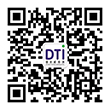Children's interactive toys China GB6675 testing items
Date:2025-05-14 09:33:17 Classification
:【question】 Visits:
Children's interactive toys China GB6675 testing project, GB6675 is China's children's toy safety standard, applicable to all toy products for children under 14 years old, including traditional mechanical toys, electronic interactive toys and other products with play functions. According to the GB6675 standard, children's interactive toys need to meet the following testing requirements:
I. Basic specifications (GB6675.1)
- Basic principles and general requirements: design and manufacturing should avoid sharp edges, small parts that may cause swallowing and choking risks, and toys should not contain harmful substances.
II. Physical and mechanical properties (GB6675.2)
- Mechanical stability: The mechanical stability of the toy ensures that it will not cause accidents during normal use.
- Strength: The strength of the toy ensures that it can withstand the pressure and tension in normal use.
- Tensile force of elastic parts: Ensure that the elastic parts will not break or cause harm when stretched.
- Prevent accidental injuries: Prevent accidental injuries caused by extrusion, impact, entanglement, ejection, etc.
3. Combustion performance (GB6675.3)
- Flame retardant performance index: The flame retardant performance index of toy materials, to prevent toys from burning rapidly and violently when children come into contact with fire sources, endangering personal safety.
4. Safety of electric toys (GB19865)
- Electrical safety performance: For charged toys, special emphasis is placed on electrical safety performance, such as insulation, heat resistance, moisture resistance, battery safety, and electromagnetic compatibility.
5. Chemical properties
- Heavy metal content: Test the content of heavy metals such as lead, cadmium and mercury in toys to ensure that these heavy metals do not cause harm to children's health.
- Toxicity: Test whether the materials used to make toys contain harmful chemicals, such as phthalates and bisphenol A, to ensure that these chemicals do not cause harm to children's health.
6. Noise level
- Noise level test: Test the noise level generated by electric toys to ensure that it does not cause damage to children's hearing.
VII. Testing Process
1. Product samples: A certain number of toy samples need to be submitted for the testing agency to conduct various tests. The specific number depends on the different testing items.
2. Product manuals and technical information: including product design drawings, instruction manuals, technical parameters, etc. These materials help the testing agency understand the structure and function of the product and formulate corresponding testing plans.
3. Enterprise qualification documents: such as business licenses, production licenses, etc., to prove the legality and production capacity of the enterprise.
4. Application form: The testing agency usually provides an application form, and the enterprise needs to fill in relevant information, such as product name, model, manufacturer name, etc.
5. Other relevant documents: Depending on the specific situation, other relevant documents may also need to be provided, such as product quality management system certification, previous test reports, etc.
Conclusion
Before entering the Chinese market, children's interactive toys must pass the GB6675 standard test to ensure that they meet various safety performance indicators and protect children's health and safety. These test items cover multiple aspects such as physical, mechanical, chemical, electrical and combustion performance to ensure that the toys meet safety standards in all aspects.




 Shen Gongwang Security: 44030602006947
Shen Gongwang Security: 44030602006947